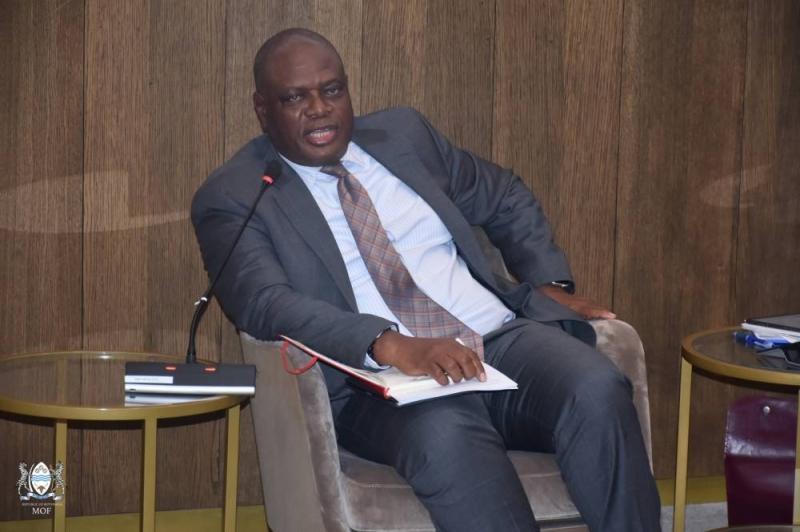Africa-Press – Botswana. The Finance Ministry announced that the Pula’s rate of downward crawl will be increased to 2.76% over the next six months, from its current 1.51%, meaning the local currency will be allowed to fall gradually in daily changes amounting to 2.76% by December.
The move is intended to support the export competitiveness of domestic producers and follows an assessment that inflation in the country will be higher than in the trading countries whose currencies are used to weigh the value of the Pula.
“The policy objective is to maintain price competitiveness of local producers for similar products, in both the domestic and international markets by equalising the exchange rate-adjusted prices,” the Finance Ministry said in explanatory notes following a briefing yesterday evening. “If a bag of potatoes is currently P100 in Botswana and R130 in South Africa at an exchange rate of P1 = R1.30, and assuming transport costs are not embedded in the pricing, Botswana’s producers face similar market price as South African producers and, therefore, competitive. “If, however, inflation in Botswana rises to be five percentage points higher than in South Africa, Botswana producers will be disadvantaged as it would be cheaper to purchase the same bag of potatoes in South Africa, holding all other things constant. “Therefore, the Pula exchange rate needs to adjust downward by five percent (rate of crawl) to maintain competitiveness of producers in Botswana; technically, maintenance of a stable real effective exchange rate.
In addition to the rate of crawl adjustment, the trading margins for the Pula between the buy and sell rates for currencies quoted by the Bank of Botswana (BoB) have been increased from ± 0.5 percent around the central rate to a margin of ± 7.5 percent. This change, combined with increasing the minimum threshold of foreign currency commercial banks can approach the central bank for, from $1 million to $5 million, is part of attempts to preserve the official foreign exchange reserves managed by the BoB.
Botswana’s official foreign exchange reserves, held by the BoB, were last measured at P46.4 billion in March, from P64.8 billion a year earlier, with the drop attributed to the prolonged downturn in diamond sales.
“The idea behind increasing the margins is to minimise or make it more expensive for banks to come to the BoB for foreign exchange,” central bank deputy governor, Kealeboga Masalila told at the briefing. “The result should be more trading of foreign currency amongst the banks themselves and motivating their clients to exchange foreign currency with them, through various products, and that way preserve the official foreign exchange reserves.”
Commercial banks and the private sector are understood to hold significant amounts of foreign currency in the country. However, the banks prefer the BoB, instead of other banks or their customers, as it is not only a cheaper source of foreign currency but also bears a statutory mandate to make these funds available on request by banks.
The changes announced yesterday take effect today and were authorised by President Duma Boko after recommendations from the Finance Ministry and the BoB.
The adjustments are part of the biannual review of the exchange rate policy framework done by the Ministry and the central bank.
For More News And Analysis About Botswana Follow Africa-Press






